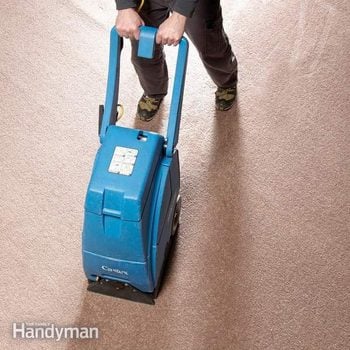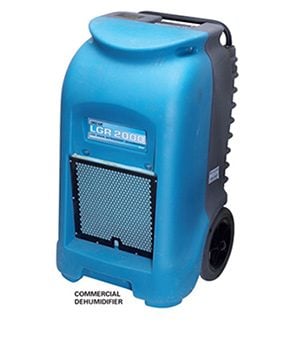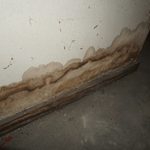How to Dry Out Wet Carpet in the Basement
Updated: Feb. 16, 2023Quick action is the key

Can wet carpet in a basement be saved?
To decide what to do if your basement is flooded, go by these rules: If the floodwater was clean (broken pipe, burst washing machine supply hose or a foundation leak), you can probably dry out and save the carpet (the pad is “iffy”). But you’ve got to act fast. If the carpet isn’t dry within 72 hours, it’ll start to grow mold. However, if the floodwater was dirty (sewer backup or washing machine drain water), you need to call in the pros (see “Call in the Pros” below).
For this article, we’ll assume the basement was flooded with clean water, the water is now shut off and the cost of the carpet is less than your insurance deductible (or that you simply want to do it yourself to avoid a claim). Before you set one boot on that squishy carpet, heed this warning: You must turn off the power to the basement. If you’re not positive which breakers power the basement receptacles, flip the main circuit breaker in the garage panel. If your electrical panel is in the basement, call an electrician to turn off the power.
Next, remove any extension cords and power strips from the floor and unplug or switch off all electrical appliances (washer, dryer, HVAC). Ask the electrician (if you hired one) to repower the upstairs (to keep the fridge going) and inspect the basement receptacles to determine whether it’s safe to repower them. If not, you’ll have to buy several GFCI-equipped extension cords and run power from upstairs receptacles.
Then it’s time to extract the water from the carpet. Don’t waste your time trying to dry out the carpet with a wet/dry shop vacuum—it simply doesn’t have enough power. Instead, rent an extractor (if available) or carpet cleaner, an air mover fan or two and a large commercial dehumidifier. Rent the largest dehumidifier available. The big ones can remove up to 30 gallons per day, compared with 4 gallons for the largest home units.
Extraction is 1,200 times more effective than dehumidification. You’ll want to move the extractor slowly across the carpet to suck up as much water as possible. Don’t rush this step! Once the water is out, peel back the carpeting (watch out for those rusted sharp nails on the tackless stripping) and remove the wet pad. Cut the pad into strips, roll it up and haul it outside. If the weather is hot, dry and sunny, you can try drying it yourself by rolling it out on your driveway. If that works, you can reinstall it by taping it back together. Just be aware that new carpet pad is cheap, so don’t waste a lot of time trying to dry the old stuff.
Lay the carpet back on the floor and fire up the air movers and rental dehumidifier. Keep the basement temperature at or below 75 degrees F. You might think hotter is better because it will dry out everything faster. But a higher temp will accelerate bacterial growth and turn your basement into a petri dish.
While the carpet is drying, check the condition of the wall insulation. If you don’t have insulation and you dry out the basement quickly, you don’t have to replace the drywall. But if the insulation is wet, it’s gotta go (wet insulation cannot be saved). Snap a chalk line, cut the drywall with a recip saw and toss the wet stuff. Replace the insulation and install new drywall.
Finally, if your appliances or furnace was under water, call in appliance and HVAC specialists before plugging any of them back in.
Save Your Stuff
Most people leave their valuable items in the basement while they dry out the carpet. Big mistake. The longer your items sit in the basement, the more moisture they’ll soak up. And that means mold. So get them out of the basement fast! Does the mold in your basement stay there? Learn if the mold in your basement can travel to the rest of your home.
- Move all electronic gear upstairs (high humidity can corrode electronic components.)
- Take photos and artwork off the walls and move them to a dry location.
- Place valuable wet books in your freezer until the “freeze-drying” effect removes all the water from the pages.
- If you can’t move furniture out of the basement, place aluminum foil under the legs.
Call in the Pros
If you had a sewer backup, washing machine drain water spill or river flood, you need professional help. Pros are the only ones with the proper equipment to get your basement dry and disinfected in the shortest possible time.
To find a certified water restoration professional, search online for “Water Damage Restoration.” Look for IICRC (Institute of Inspection, Cleaning and Restoration Certification) credentials in the company information (Servicemaster is one company that is fully certified). Or, go to iicrc.org and click on “Locate a Pro.”
Be aware that pros can give you a rough price estimate (the average cost of a basement cleanup is $2,500), but the final cost depends on how long it takes them to dry out your basement. There are just too many variables beyond their control (inside and outside temperature and humidity levels) to give you a set price up front. Be wary of any company that gives you a set price over the phone.
Required Tools for this Project
Have the necessary tools for this DIY project lined up before you start—you’ll save time and frustration.
- Dust mask
- Hammer
- Pry bar
- Rags
- Utility knife
Required Materials for this Project
Avoid last-minute shopping trips by having all your materials ready ahead of time. Here’s a list.
- Carpet pad






